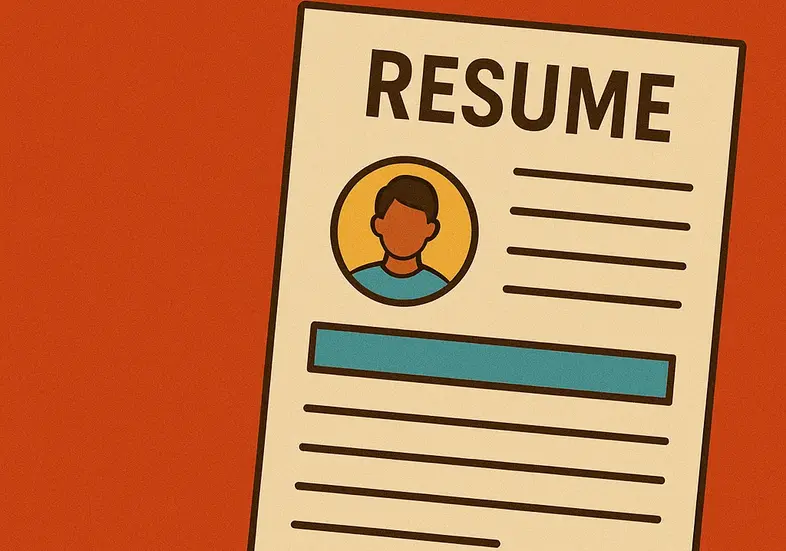If you’re wondering what makes a resume stand out today, you’re not alone. The job market has undergone a dramatic transformation, and traditional resume strategies that worked just a few years ago are now completely outdated. With AI integration in applicant tracking systems and changing hiring practices, understanding what makes a resume stand out today could be the difference between landing your dream job and getting lost in the digital shuffle.
As a certified career coach and certified resume writer with 15 years of recruiting experience, I’ve witnessed firsthand how the resume landscape has evolved. The insights I’m sharing are based on what’s actually working in today’s job market, not outdated advice from years past.
The Old vs. New Resume Strategies
Let’s cut straight to the point with rapid-fire tips on what works today versus what’s outdated. You might already know some of these, but the ones you don’t know could make all the difference in your job search success.
1. From Generic to Targeted: The Tailoring Revolution
OLD: Having a general resume for every job application
NEW: Tailoring your resume for every single application, including customizing the job title and incorporating different keywords throughout. Save your resume file with a tailored name like “Sarah Camilo – Career Coach – [Company Name]” to stand out and let employers know you’re applying specifically for their organization.
What makes a resume stand out today is personalization. Generic resumes get generic results. When you tailor your resume, you’re showing employers that you’ve done your homework and are genuinely interested in their specific role.
2. Ditch the Objective, Embrace the Summary
OLD: Having an objective statement at the top of your resume
NEW: Replace the objective with either an executive summary, professional summary, or three to four bulleted key accomplishments. These accomplishments should be something employers won’t overlook as they review your resume.
You don’t even have to label this section. You can have a summary with some accomplishments, or just accomplishments alone. If you choose accomplishments, keep them separate from your work experience so they stand out and don’t get overlooked in the sea of job descriptions.
3. Privacy Protection: Less is More
OLD: Including your full address on your resume
NEW: Only include your city and state. People are nosy today—they’ll pull up your Zillow listing and somehow find out how much you owe on your mortgage. Keep your full address off your resume entirely.
For those focused on remote opportunities, you can even omit the city and state completely. It’s your discretion, but remember that what makes a resume stand out today is often what you choose to leave out.
Protect Your Privacy, Protect Your Career
A modern resume highlights your skills—not your street address. Keep your personal details secure while staying visible to top employers. Take the next step toward landing your ideal job with confidence.
Search Secure Job Opportunities →4. References: Save for Later
OLD: Including “References available upon request”
NEW: Remove this entirely from your resume. When you reach the references stage, it occurs electronically and is usually closer to the offer stage in the process. There’s no need to have it on your resume at all.
This outdated practice takes up valuable space and serves no purpose in today’s digital hiring process.
5. Results Over Responsibilities
OLD: Listing all your responsibilities aligned with the job description
NEW: Remove any time it says “responsible for” from your resume. Instead, include the scope of every job, the accomplishments you’ve achieved, and the projects and initiatives you’ve been part of.
Focus on quantitative information whenever possible. When in doubt, focus on annual goals, target goals, and KPIs you’ve met and exceeded. Highlight the results of every project or initiative and what it accomplished for your team or company.
Save the detailed responsibilities as talking points for the interview. Your resume should focus on results, not duties.
6. The 10-15 Year Rule
OLD: Listing every job you’ve ever held
NEW: Only include relevant positions from the past 10 to 15 years to keep the focus on your current skills. If you want to show your career path, create an “Additional Professional Experience” section after your work experience.
In this section, simply list previous employers and job titles without dates if they go too far back. This shows your career progression without cluttering your resume with outdated information.
7. Two Pages is the New One Page
OLD: Resumes must be one page
NEW: Two pages is the norm today, especially if you have at least 10 years of work experience. Keep your bullets concise and focused on accomplishments and results, but don’t feel constrained by the one-page rule.
What makes a resume stand out today is having enough space to properly showcase your achievements without cramming everything into an unreadable single page.
8. Keep It Simple: One Column Only
OLD: Using complex two-column formats with shading
NEW: Stick to a simple one-column format. While you might see trendy two-column resumes with one side shaded, this format doesn’t work with most ATS systems in the US.
If your resume feels too boring, use colored fonts or subtle shading throughout, but keep it to one column only. ATS compatibility is crucial for getting your resume seen by human eyes.
9. The LinkedIn Connection
OLD: Apply for a job, recruiter reviews your resume, then calls you for an interview
NEW: Many resumes don’t even get read initially. You’re often found on LinkedIn or through referrals first, then asked for a resume. Once recruiters see your resume, they often go straight to your LinkedIn profile to review your “About” section and learn more about you outside of your resume.
This is why maintaining a strong LinkedIn presence is crucial. Your resume and LinkedIn should work together to tell your complete professional story.
Strengthen Your LinkedIn, Strengthen Your Career
Recruiters often find you on LinkedIn before your resume ever gets read. Make sure both tell the same powerful story—and position you for the opportunities you deserve.
Discover Career Opportunities →10. Professional Yet Conversational
OLD: Using very formal, stiff professional language
NEW: Keep it professional but conversational. This tone makes your resume more engaging and authentic. For example, instead of “Technical Skills,” you could use “Tech Stack” to make it more approachable and easy to read.
The goal is to sound like a real person while maintaining professionalism. This balance is what makes a resume stand out today in a sea of robotic, templated documents.
The AI Integration Factor
Just like every other industry, AI is slowly getting integrated into applicant tracking systems. This means your resume needs to be optimized not just for human readers, but for AI systems that might be doing the initial screening.
Understanding how AI processes resumes will become increasingly important as we move through 2025. The strategies that work today might need to evolve as AI becomes more sophisticated in resume screening.
A Real-World Success Story: From Rejection to Dream Job
Meet Marcus, a marketing professional who was struggling to get interviews despite having strong qualifications. After applying the new resume strategies, Marcus saw immediate results:
Before: Marcus used a generic resume with an objective statement, listed all his responsibilities, and included his full address. He applied to 50+ jobs with zero responses.
The Transformation: Marcus tailored each resume for specific applications, replaced his objective with three key accomplishments, removed his full address, and focused on quantifiable results like “Increased lead generation by 40% through targeted campaigns.”
The Result: Within two weeks, Marcus received three interview requests and landed his dream job at a growing startup. The hiring manager specifically mentioned that Marcus’s resume stood out because it was clearly tailored for their role and focused on measurable achievements.
Marcus’s story proves that understanding what makes a resume stand out today isn’t just about following trends—it’s about adapting to the reality of modern hiring practices.
Conclusion: Mastering the Modern Resume
What makes a resume stand out today is fundamentally different from what worked even a few years ago. The job market has evolved, and your resume strategy needs to evolve with it. By implementing these 10 proven strategies, you’re not just updating your resume—you’re positioning yourself for success in today’s competitive job market.
Remember, your resume is often your first impression with potential employers. In a world where AI screens applications and recruiters have limited time, what makes a resume stand out today is clarity, relevance, and results. Focus on what you’ve accomplished, not just what you’ve done, and always tailor your approach to the specific role and company.
The resume revolution is here, and those who adapt will thrive. Don’t let outdated practices hold you back from landing your dream job. Start implementing these strategies today, and watch as your job search results transform from frustrating to fantastic.




